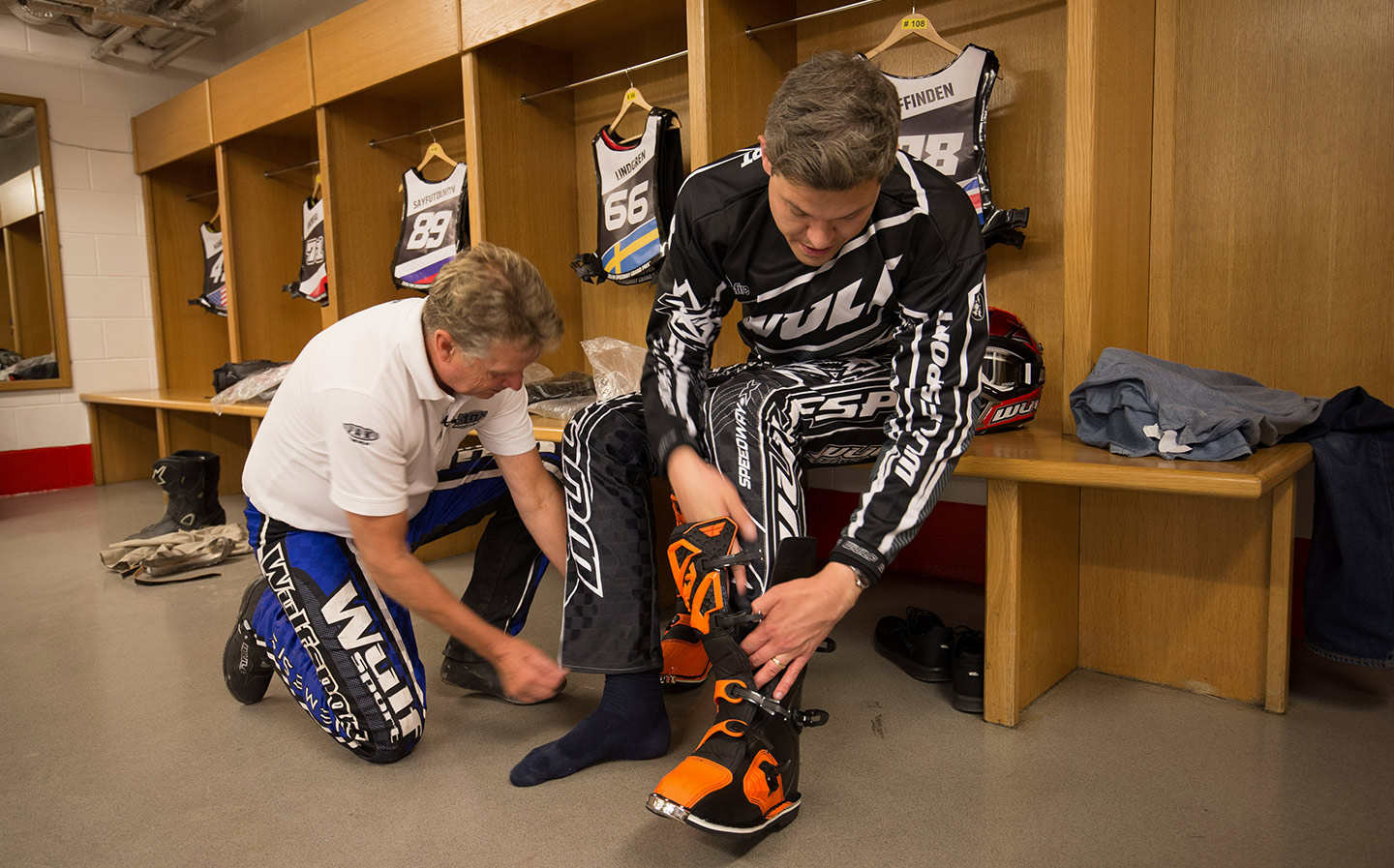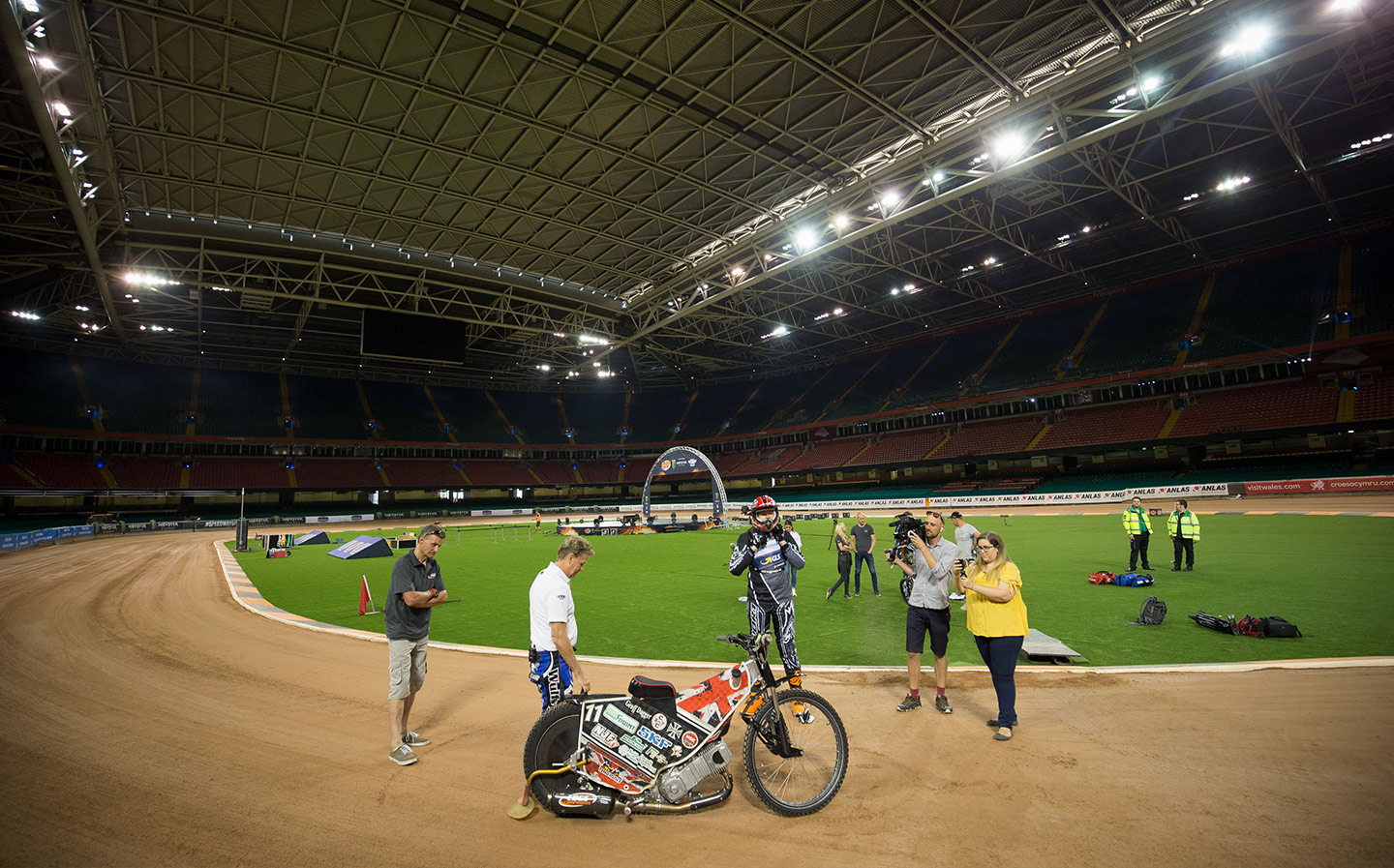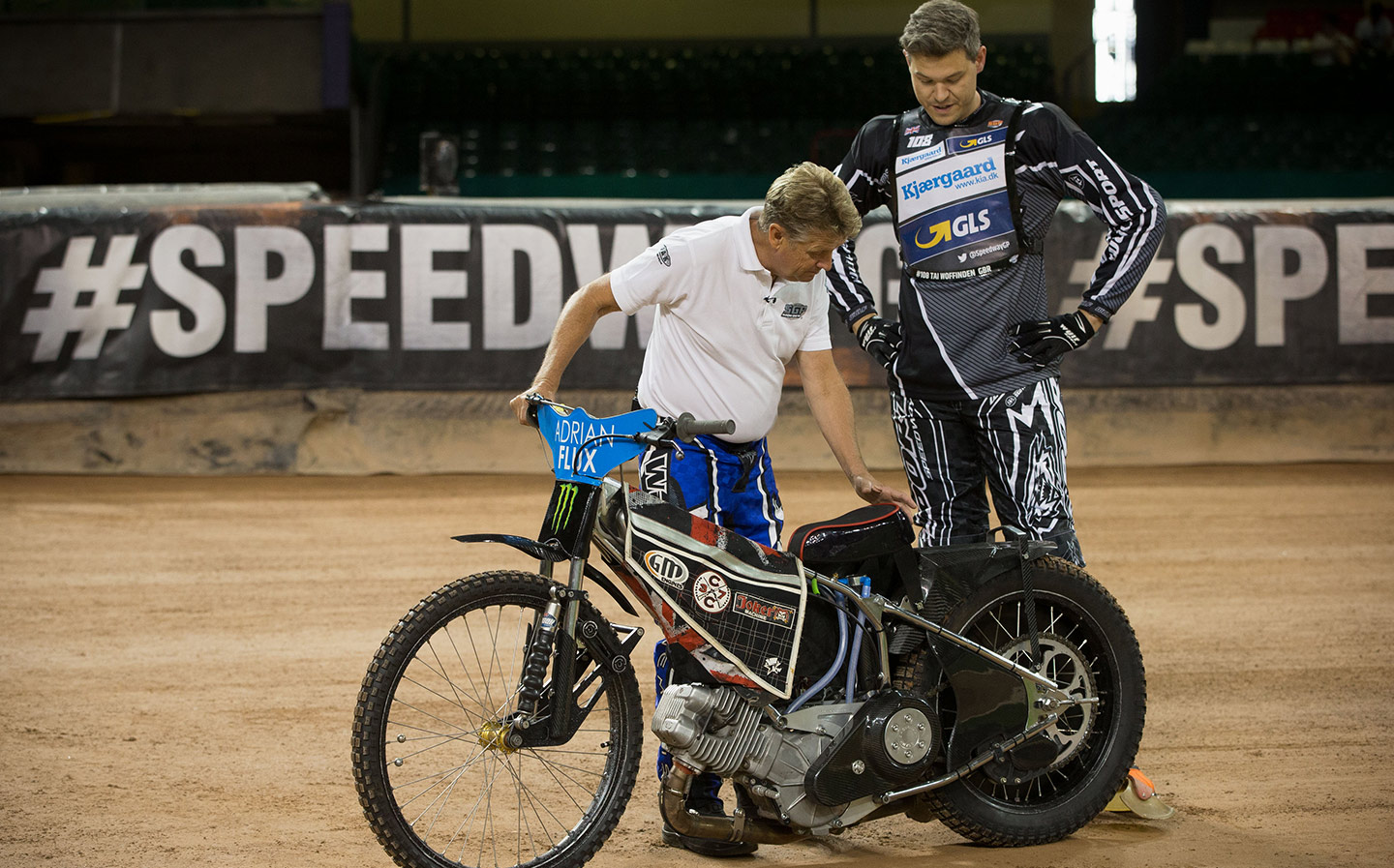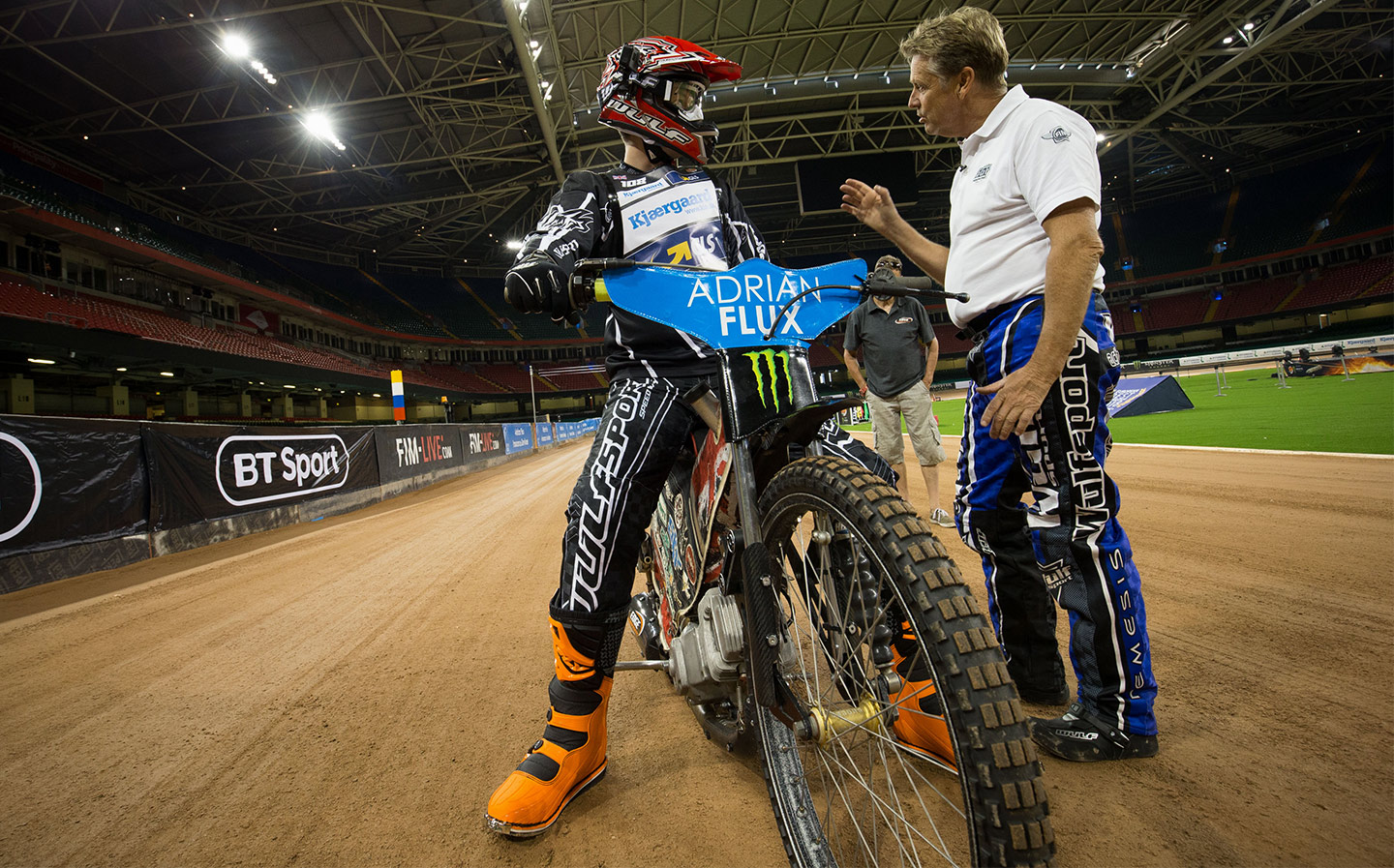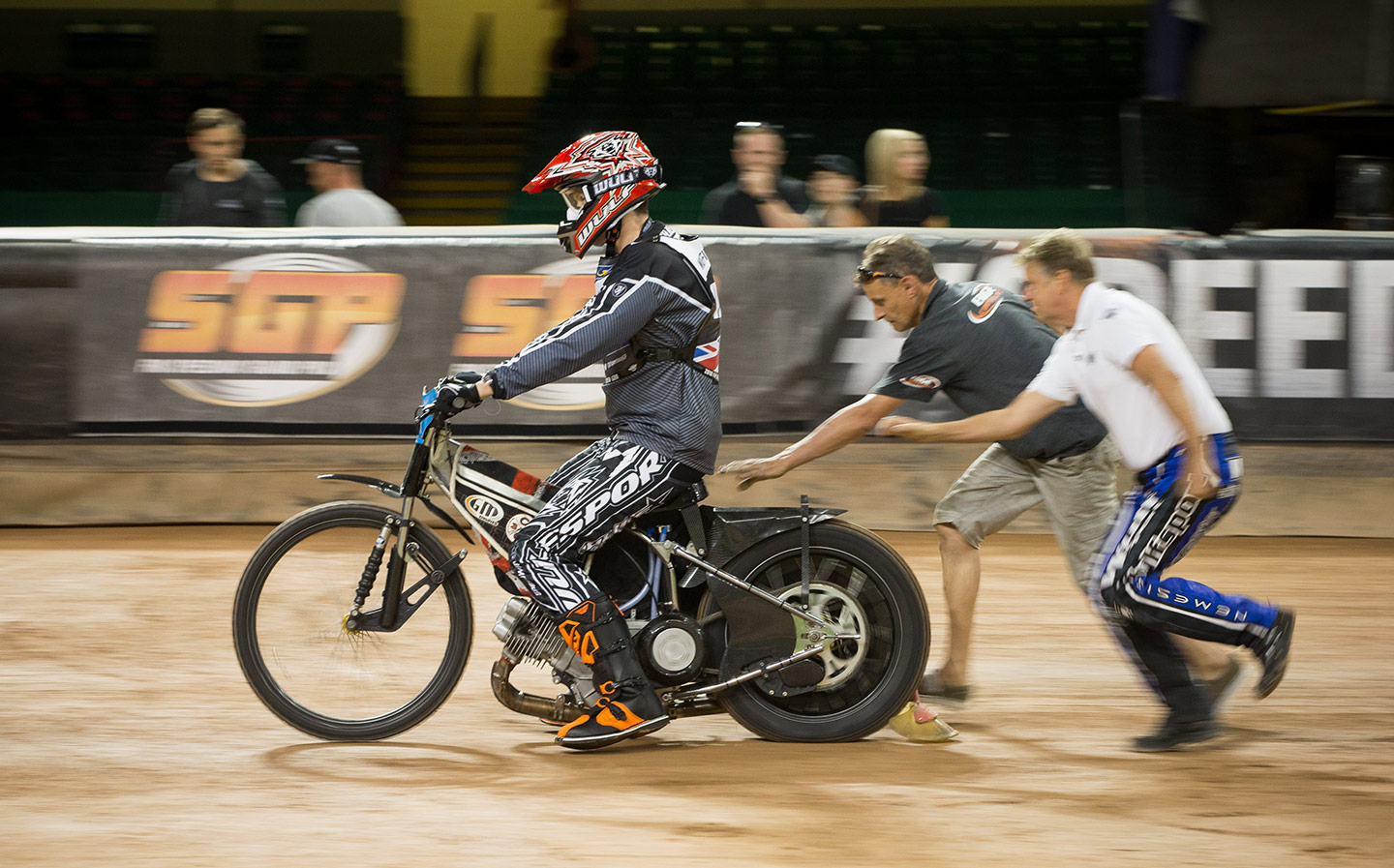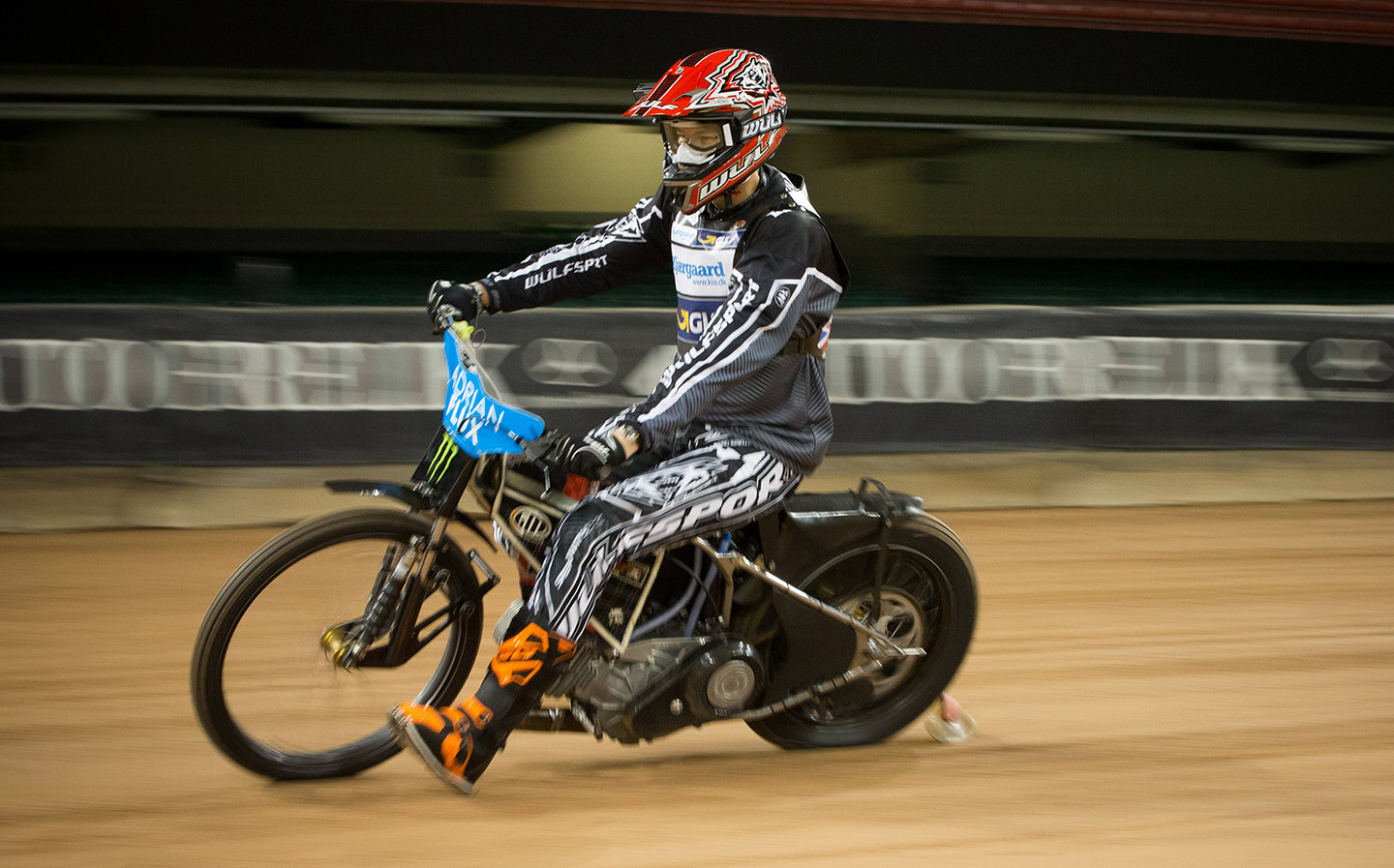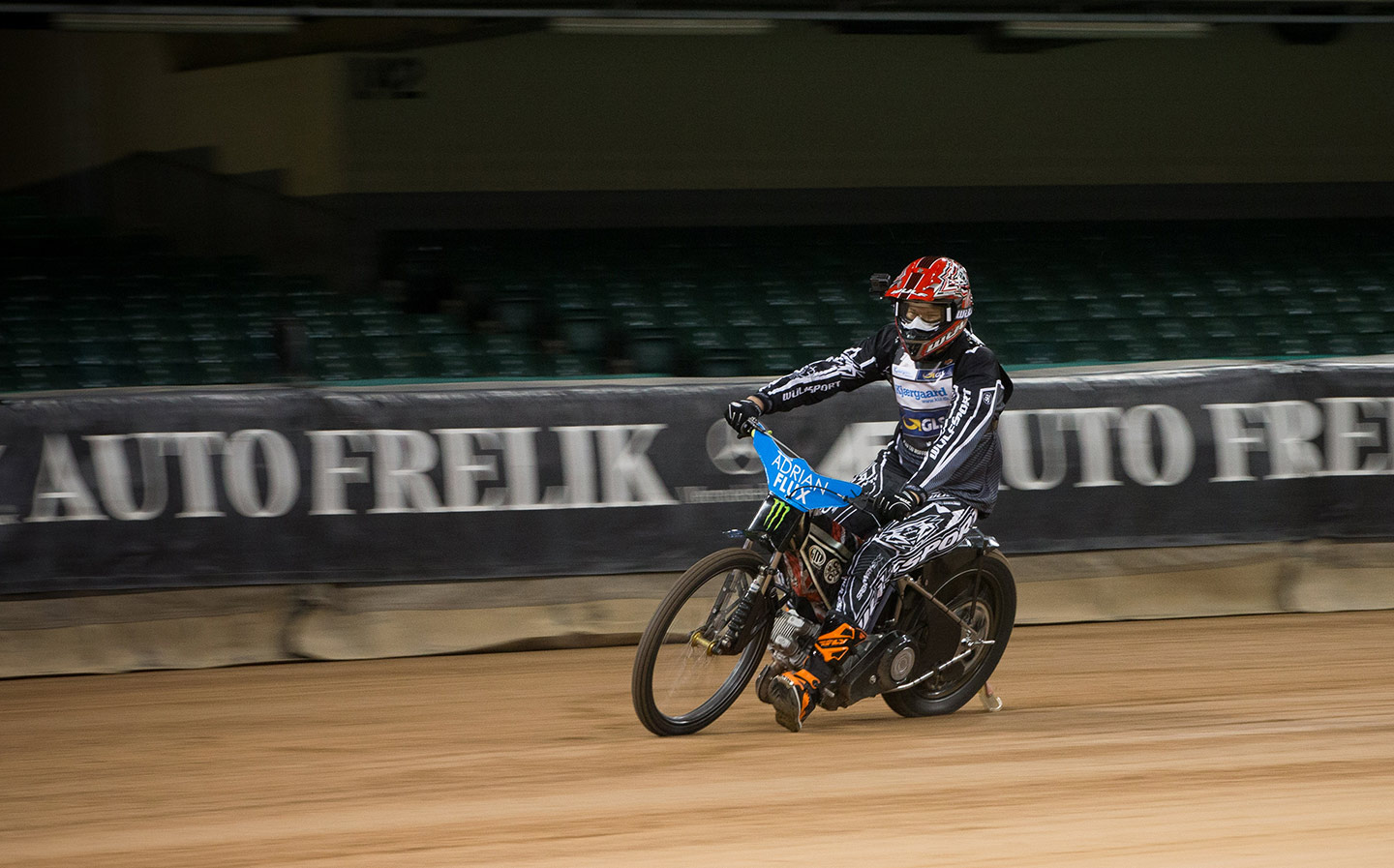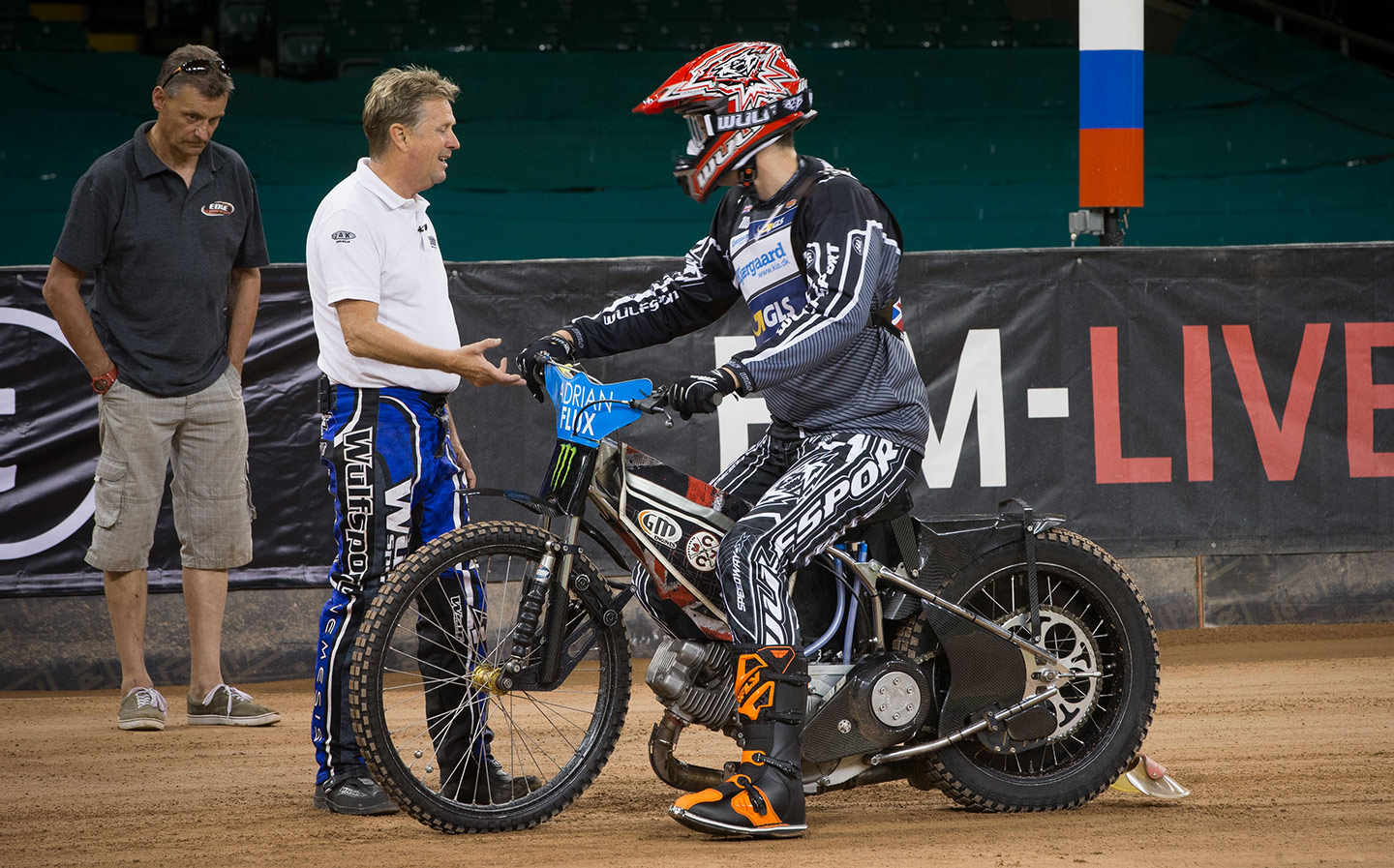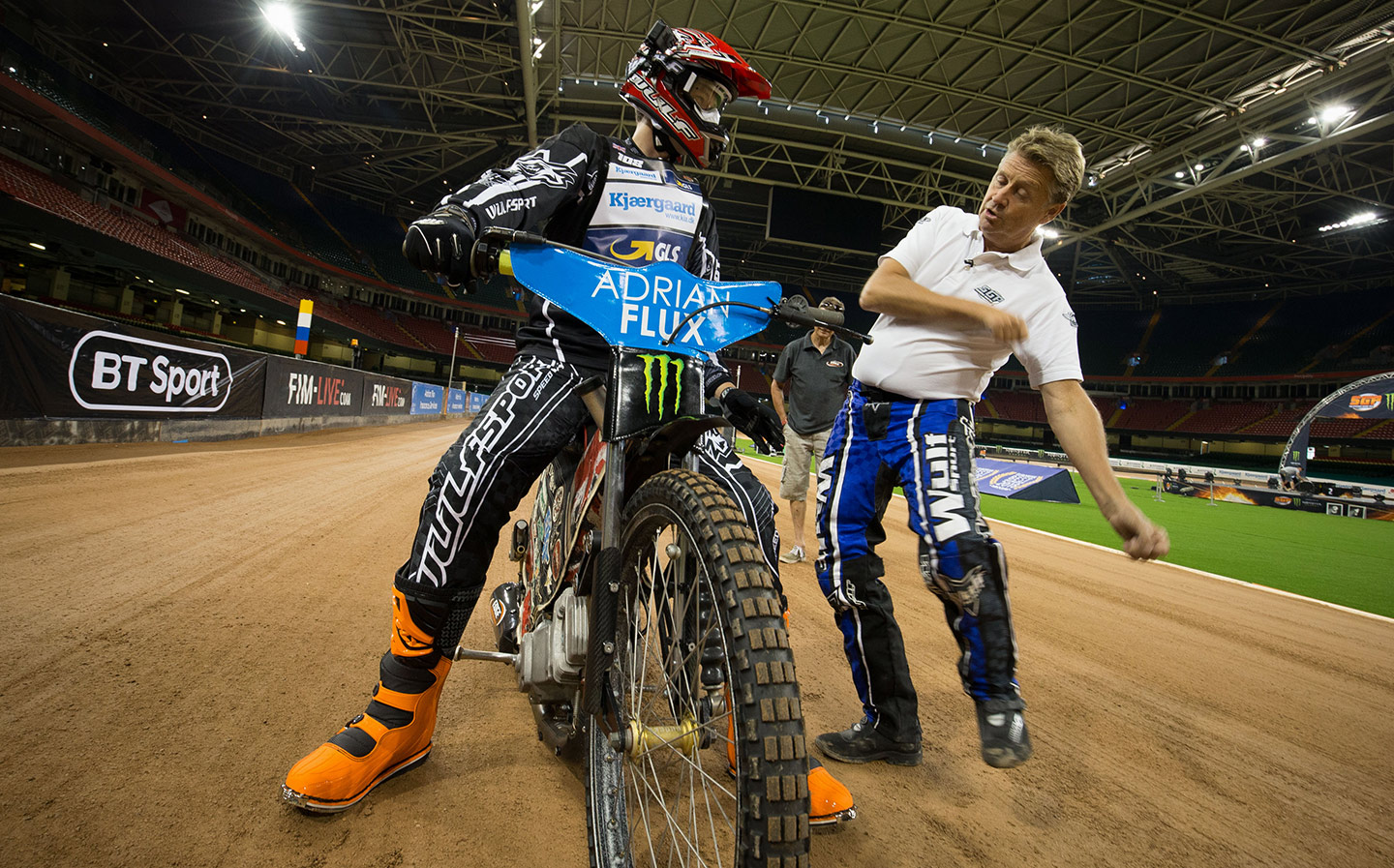This is what it's like to ride a Speedway GP bike (badly)
Guts and stamina needed by the bucketload
TO THE uninitiated, riding a Speedway GP bike doesn’t look that tricky. Yes, the professionals race at breakneck speed and seem to have an alarming disregard for unbroken bones, but the actual act of riding the bikes isn’t hard, surely? Oval courses, 500cc engines, no gears… it’s not exactly the Isle of Man TT, is it?
That was what I was telling myself as I arrived for a go on the bikes yesterday, ahead of this weekend’s FIM British Speedway Grand Prix at the Principality Stadium in Cardiff, Wales. In truth, though, I was absolutely terrified.
For a start, while I have a motorcycle licence, and owned a Honda CBR600F for some time, it’s been five years since I have ridden a motorbike of any kind.
Adding to my apprehension was the fact that Speedway bikes don’t have brakes – they’re just not needed on the oval tracks, as slowing down is absolutely not what those guys want to do. The constant left-handers around the 272-metre circuits are a bit of an inconvenience to them, to be honest.
Then, there’s the matter of the track surface – it’s dirt, or shingle, to be precise. Some 3,500 tonnes of the stuff is dumped into a stadium and compacted, ready for racing, before it’s then collected up again and stored for use in the future. I’ve never ridden off-road before, let alone attempted to drift sideways around corners.
And although they’re 500cc bikes, they weigh around 77kg, which is considerably less than I weigh, and fueled by pure Methanol rather than petrol, which increases the compression, and therefore the power. A Speedway GP bike can reach 50mph from standstill in 2.5seconds before topping out at 120mph, depending on the size of the rear cog. In a race, the top guys will average over 70mph. On a dirt oval.
Then there’s the fact that I’m hardly jockey-sized, like the pro riders. I weigh nearly 30kg more than the bikes, for goodness sake.
“Treat it with disrespect and it’ll turn into a beast”
Fortunately, my instructor was completely relaxed about the prospect of letting a lumpen amateur like me have a go. After kitting me up in body armour and helmet, Tony had only a few words of advice before I went out on track: don’t try turning right, as the over-sized foot rest on that side would dig into the dirt and flip me off the bike, and be very easy with the throttle.
“Be gentle with it and it’ll be gentle with you,” he told me. “Treat it with disrespect and it’ll turn into a beast.”
Tony pulled the bike back, to prime the single-cylinder engine, then pushed me forwards for a bump start. Releasing the clutch, the bike blasted into life before a gentle easing back of the accelerator got me on my way. Slowly. Very slowly.
The footage above confirms I wasn’t exactly pushing it round the Principality Stadium. In total I got three runs of three or four laps, with Tony offering me tips and encouragement to speed things up after each session: “Give it a blast down the straight,” “Lean into the corner more,” “Put your left leg out straight and push down with your right leg – you want to try and stand up, if possible.”
My best lap time? Around 10 seconds slower than the 13 second laps achieved by the likes of Tai Woffinden and Fredrik Lindgren. I was told 10 seconds was not a big gap but knew that to Woffinden, who deals in gaps of hundredths of a second, 10 whole seconds would be planetary in size.
I was offered more time on track but during the second session I found I was getting breathless, and beginning to ache in my forearms and legs. This was much more physical than I had imagined.
In the end, during my third time out on track and as Tony was winding me up to go faster and faster, I had to come in for an early bath. My body was done. If you’d have asked me what muscles would be used riding a Speedway bike, my first answer would not have been “quadriceps”, but they’re what hurt at that point and still ache as I write this, 24 hours later.
I left Cardiff with a newfound appreciation of Speedway GP riders. They’re not (just) a bunch of speed-addicted nutters; they’re true athletes.
The 2018 Adrian Flux British FIM Speedway Grand Prix takes place tomorrow (Saturday) at the Principality Stadium, Cardiff. Tickets cost from £19. Visit speedwaygp.com for more info.


